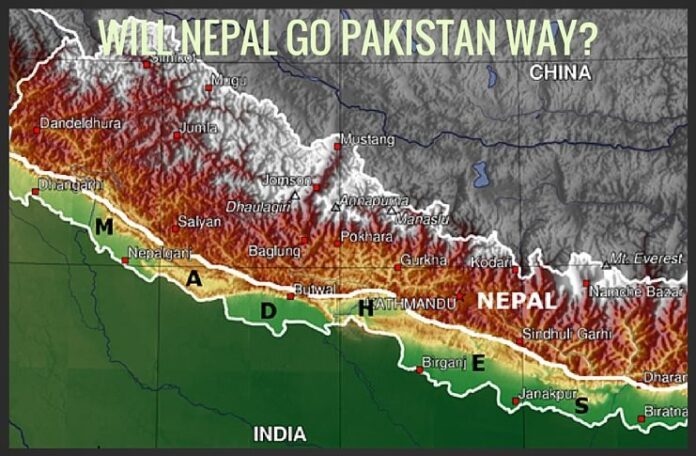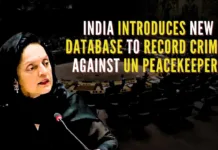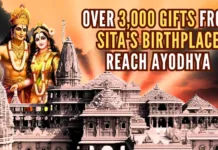
K K Singh
Patna
[dropcap color=”#008040″ boxed=”yes” boxed_radius=”8px” class=”” id=””]S[/dropcap]ince the promulgation of the new Constitution in Nepal, the country is beset with massive unrest and violent protests. A large section of the population, mainly ‘Madhesis’ (Indian origin born Nepalese), Tharu tribals, and Janjatis, who live close to the Indian border, are outraged over some discriminatory provisions in the new Constitution…
The new Constitution was finalized on September 20, 2015 replacing the interim Constitution, which was okayed by the Nepal Parliament in 2007. From 1948 onwards, autocrat ‘Ranas’ or the Monarchy led by Kings rejected as many as six constitutions. After a prolonged struggle and revolution in April 2006, the monarchy was abolished and an interim Constitution put in place in 2007. The Constituent Assembly was mandated to frame the new Constitution of the country within two years. A constituent assembly was elected in 2008. The Constituent Assembly failed to frame the country’s Constitution within the time-frame because of many hiccups posed by the Maoists. Again, in 2013 a new Constituent Assembly was elected, and finally the new Constitution was drafted.
The word “Madhesh” is derived from Sanskrit “Madhyadeshis”
Since the new Constitution is replete with many lacunae, the Madhesis have started a nationwide agitation, leading to an undeclared blockade by India. This has delivered a huge blow to the economy of the Himalayan country.
[dropcap color=”#008040″ boxed=”yes” boxed_radius=”8px” class=”” id=””]T[/dropcap]he new Constitution has some good features; the government will be parliamentary in nature, and with members elected through a mixture of direct and proportional election. However, it overwhelmingly rejects the concept of Hindu Rashtra and incorporates secularism as the guiding principle of a federal structure that would involve the creation of seven states.
However, the celebration of a new Constitution was marred by some ugly incidents because of step-motherly treatment to Madhesis, Janjatis and Tharus. The Madhesis are upset with several discriminatory provisions including one which says that children of women from the terai who marry Indians cannot be Nepalese citizens. The dhoti-wearing Madhesis, speaking Hindi or Nepali dialects and having family connections with India, have never been accepted by hill-centric ruling elite of Kathmandu. Although madhesis constituted 30% of the population and contribute majority of the revenues, they continue to face discrimination as government services and army are mostly out of bounds for them. Madhesis have no uniform entity because of different caste and religion but they have bonds of common interest.
[dropcap color=”#008040″ boxed=”yes” boxed_radius=”8px” class=”” id=””]T[/dropcap]he new Constitution has created for the Madhesis some strange provisions the likes of which saw the split of Pakistan. The Constitution has stipulated that 12 out of 20 districts of Madhes will be attached to and become appendages of hill districts. The delineation of constituencies has ensured that the representation of Madehesis in the direct elections will fall from legitimate 83 to 63. It would also lead to disenfranchisement of a large section of people and make territory and not population as the decisive factor for delineation. Madhesis resented such provisions in Terai area and launched fierce protests and blockades, which is continuing. In addition, an ethnic divide within Nepal is being emphasized obviously to create a wedge between Janjatis, Tharus and Madhesis. The Madhesis plight is akin to that of East Pakistan at the hand of West Pakistan before the creation of Bangladesh in 1971.
This analogy may come true if Madhesis, Tharus and Janjatis continue to be neglected and ethnic divide is encouraged by the Nepalese authorities. The Kathmandu Post sums up the situation in the following words: “One of the major hindrances to political progress in Nepal has be a majoritarian mindset… to completely alienate the Madhesis’ leaders would compel them to stand with other Madhesi actors who advocate a more radical and violent solution to the problem—to the extent of demanding the secession of Madhesh from Nepal… one can expect a reasonable solution of the burning issues in Nepal by Nepalese themselves!”
Who are Madheshis?
[dropcap color=”#008040″ boxed=”yes” boxed_radius=”8px” class=”” id=””]T[/dropcap]he flat southern region of Nepal – the terai – is known as Madhesh in the Nepali language and is indigenous inhabitants are called Madheshis! Terai areas of Nepal occupies 17% of the total areas of Nepal (22% madheshis and 29% non-madhesh- Hindu and Muslims) of Nepal population. The term Madhesh refers in the Indo-Gangetic plain between Ganga and Indi-Nepal border. (Once during Ranas’ rule, Kathmandu used to claim entire areas south of Ganga as the Nepal territory and had asked the Indian govt to vacate the entire areas south of Ganga to Nepal territory)
Terai comprises 34, 109 square km and 20 districts, accounting for 22% of total area of Nepal, and 23.2 million of population out of 47.79 millions; The word “Madhesh” is derived from Sanskrit “Madhyadeshis” (Middle of country), referring to Nepal and now under Indian territory, formerly name as “Awadh”.
The entire area of Madhesh lies between the hills and the Gangetic plain. It is said that the Madhesh areas were annexed into kingdom by the Gorkhas in their first flush of expansion. Much of it was ceded to East India Company in 1816 at the Teaty of Sugouli and returned after 1857 as a token of gratitude following assistance rendered by the Ranas in supressing the uprising!
[dropcap color=”#008040″ boxed=”yes” boxed_radius=”8px” class=”” id=””]D[/dropcap]hoti-clad Madheshis, speaking Hindi or its dialects and having family connections across the border in Bihar and Uttar Pradesh, have never been accepted by the hill-centric ruling elite of Kathmandu as equal citizens. Madhesis were targeted several times in their own homeland. even though they are the main source of agriculture produce in Nepal.
Madhesis is not a uniform entity. There are differences in caste and religion as well as different perceptions of self-interest. Earlier, Nepali Congress had strong-foot hold in Madhesis areas.
Now the Madhesis are up in arms over further discrimination in the new Constitution of Nepal. Perceptions are no less important than reality, and it is widely seen that privileged classes of hill areas–Bahuns and the Chhatris—are, attempting to perpetuate their dominance over the terai people. Babu Ram Bhattarai, the chief ideologue of Maoists and a former prime minister has resigned from the party, supporting the demands of Madhesis.
Seven changes India wants Nepal to make in its constitution to address the Madheshi problem:
- India wants the electoral constituencies in Madhes to be based on population. The Article 63 (3) of the Interim Constitution states that the electoral constituencies will be based on population, geography and special characteristics,“ and in the case of Madhes on the basis of percentage of population.” The latter phrase, however, has been omitted from Article 84 of the new constitution. India wants it re-inserted.
- India wants the word ‘proportional’ be inserted in the Article 42 of the new constitution. The article states that “the right to participate in state structures on the basis of principles of inclusion”. The Article 21 of the Interim constitution, however, mentioned that various groups would have “the right to participate in state structures on the basis of principles of proportional inclusion”. The word ‘proportional’ has been dropped from the Article 42 of the new constitution. India has asked the word to be reinstated.
- The amendment three is on the Article 283 regarding the special provisions relating to Citizenship of the office-bearers. The article states that the only those who have a citizenship by descent will be entitled to the position of president, vice president, PM, chief justice, speaker of the parliament, chairperson of National Assembly, head of the province, chief minister, speaker of provincial assembly and chief of security bodies. Delhi says this should be amended to include citizenship by birth or naturalization as a large number of Madhesis have acquired citizenship by birth or naturalization.
- India wants representation in the National Assembly to be based on the population of the provinces. But the Article 86 of the new Constitution states that National Assembly will comprise 8 members from each of seven states and three nominated members.
- The five disputed districts—Jhapa, Morang, Sunsari, Kanchanpur and Kailali—be included in Madhes provinces. These districts are currently in province one (Jhapa, Morang, Sunsari) and province six (Kailali, Kanchanpur) along with hilly and mountainous districts.
- The article 281 (12) states that the delineation of electoral constituencies shall be put to review in every 20 years. It was to be reviewed on every 10 years in the interim constitution. India wants this time to be restored to 10 years.
- The Article 11 (6) states that a foreign woman married to a Nepali citizen may acquire naturalised citizenship of Nepal as provided for in a federal law. Madhesi parties want acquisition of naturalised citizenship to be automatic on application. This also finds favour with Delhi.
Note:
1. The author is a former Chief reporter of The Times of India, Patna.
- Will Nepal go Pakistan way? - November 4, 2015










